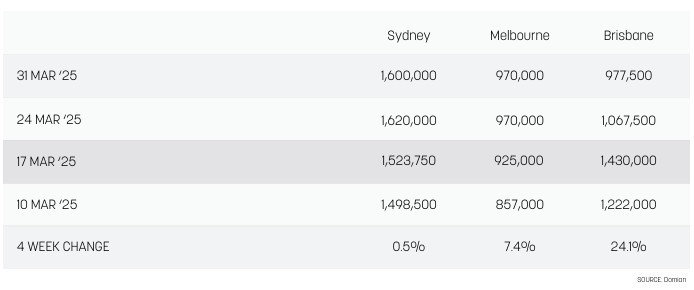CoreLogic Analysis of “Pain or Gain”
|
Residential

CORELOGIC ANALYSIS OF “PAIN OR GAIN” IN PROPERTY - DECEMBER 2024 QUARTER
National Profit Trends:
In the December 2024 quarter, 94.8% of residential dwelling sellers achieved a nominal profit, with the median profit reaching $306,000, totaling $35.6 billion in profits realised across the market
Resale Losses:
While the majority of sales were profitable, there were some losses, with the median nominal loss at -$45,000 and a total nominal resale loss of $302 million. This highlights the overall resilience of the property market and its relative safety for investors.
Impact of Time, Location, and Property Type:
The results underline that timing, location, and property type are crucial factors influencing profitability. Sellers in high-demand areas continue to see strong returns, while market timing plays a significant role in achieving success.
Melbourne Market Update:
The Melbourne market has shown positive growth, as predicted, with increased demand leading to rising property values


CoreLogic’s recent analysis of 95,300 resales in the December 2024 quarter reveals a median nominal gain of $306,000 per home sale, with an impressive 94.8% of selers making a profit. In total, these sales resulted in $35.6 bi lion in nominal gains across the country. CoreLogic’s Head of Research, Eliza Owen, highlighted that despite mixed market conditions, declining capital growth, and lower clearance rates, Australian property continues to deliver strong profitability. She noted, “Given the strong relationship between capital growth and the rate of profitability and expected further easing in the cash rate this year, the profitability rate from home resales is likely to accelerate in 2025.” However, not al resales resulted in profit. 5.2% of resales made a loss, with the median loss being $45,000, and total losses from these resales amounting to $302 mi lion. But when we compare $35.6 bi lion in gains to $302 mi lion in losses, the odds are clearly in favour of property investment.
Why do Losses Happen in a Soaring Market?
Despite the rise in property values, losses often come from properties held for shorter periods. Profit-making properties were held for an average of 9.3 years, while loss-making sales were held for just 7.6 years on average, with a third of these properties held for less than 4 years. Many of these properties were bought during the COVID-19 boom and sold during the interest rate hikes.
The Impact of Property Type and Location
Sydney and Melbourne accounted for 60.6% of loss-making resales, despite representing only 34.2% of total resales. The majority of these losses were from units, especialy in inner Melbourne, where the off-the plan apartment boom has led to lasting losses for selers. Houses, on the other hand, were far less likely to experience losses, with only 3.0% of house sales at a loss compared to 10.1% of al apartment sales.
Top Performing Locations
Across Australia, Brisbane led with a 99.6% nominal gain, folowed closely by Adelaide at 99.1%, Perth at 97.4%, and Sydney at 92.5%. Melbourne also showed strong performance at 89.2%.
Knowledge, Expertise, and Due Diligence
While there is an element of luck in any investment, the key to success is knowledge, expertise, and due diligence. Many investors fal into the trap of paying a developer’s premium for off-the-plan properties, where they would be better off investing that premium in Buyer’s Advisory expertise to secure more informed, profitable decisions.







